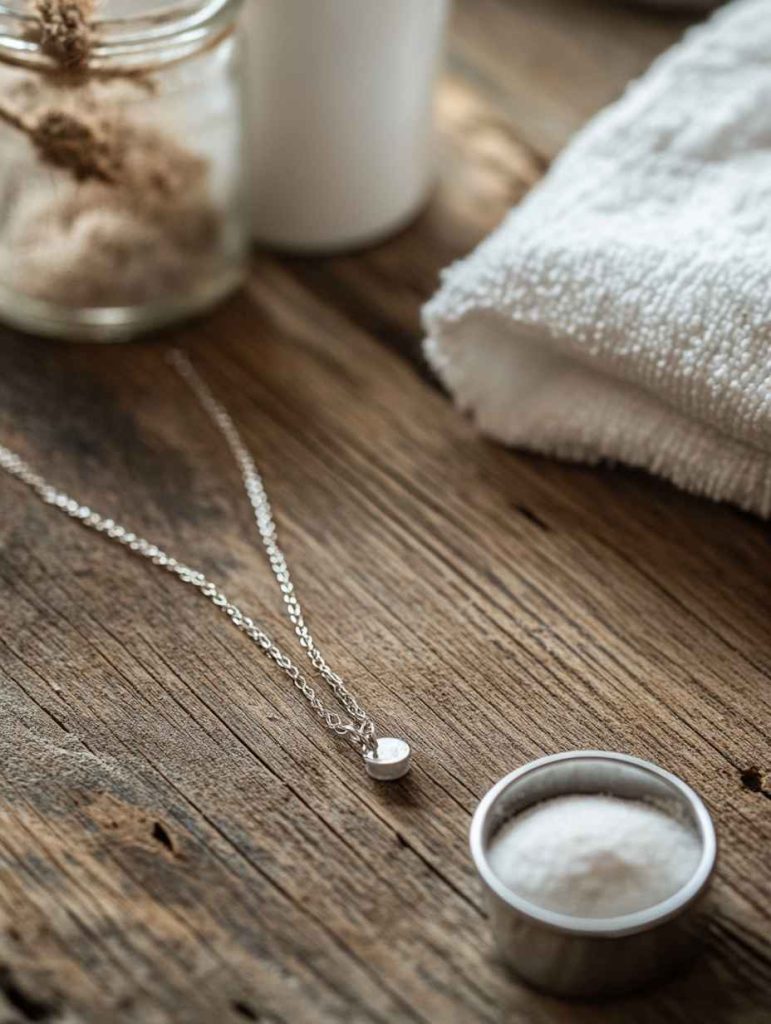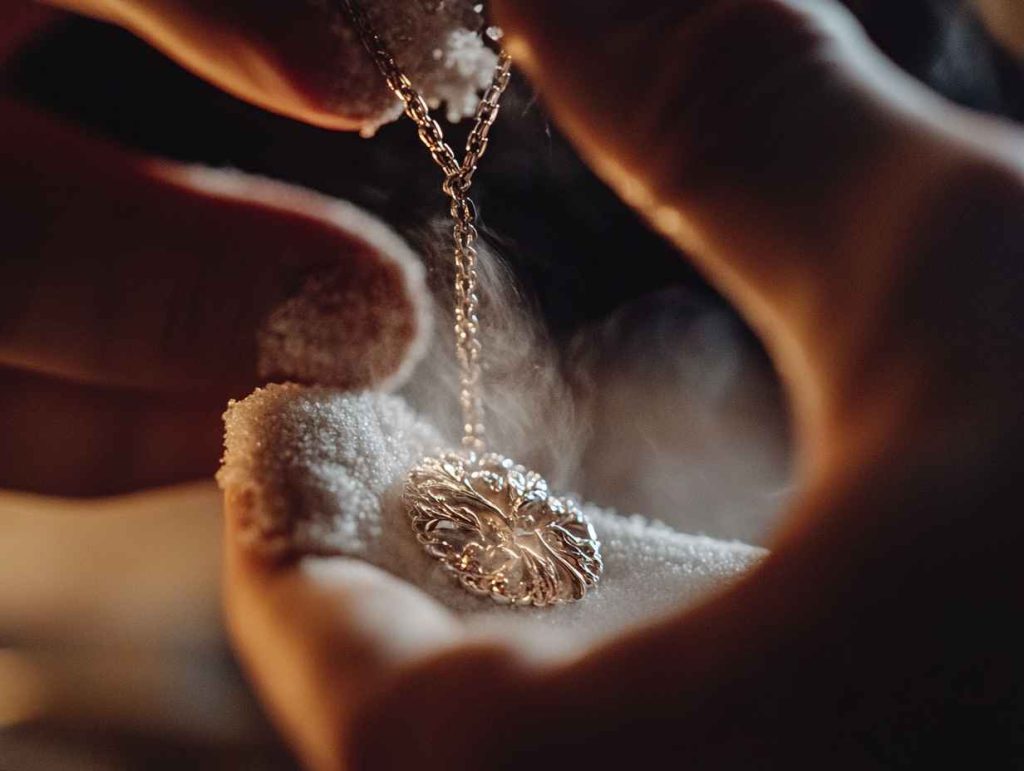Silver necklaces are a timeless accessory that can elevate any outfit.
However, many silver owners face a common issue—the necklace starts turning black.
While this can be disappointing, it’s a natural process that happens due to the chemical nature of silver.
In this blog, we’ll explore why silver necklaces turn black, how to prevent it, and what you can do to restore their shine.

What Causes a Silver Necklace to Turn Black?
Silver tarnishing is primarily caused by oxidation and chemical reactions. Here’s a detailed explanation:
1. Exposure to Sulfur Compounds
Sulfur compounds, present in the air or certain substances, react with silver to form silver sulfide, a black layer on the surface. Common sources of sulfur include:
- Polluted air
- Perfumes or lotions
- Foods like eggs and onions
2. Moisture and Humidity
High humidity accelerates tarnishing as moisture facilitates the reaction between silver and sulfur.
3. Sweat and Skin Oils
Silver reacts with sweat, which contains salts and acids. Over time, this reaction can lead to discoloration.
4. Contact with Chemicals
Everyday chemicals such as cleaning products, detergents, and cosmetics can tarnish your silver necklace.
How to Prevent Silver Necklaces from Turning Black
1. Store Your Necklace Properly
Use an airtight container or a soft, anti-tarnish pouch to minimize exposure to air and moisture. For more tips on jewelry storage, visit How to Care for Jewellery.
2. Avoid Contact with Chemicals
Remove your necklace when applying perfumes, lotions, or hair products. Also, avoid wearing it while swimming or showering.
3. Regular Cleaning
Regular cleaning can prevent tarnish from building up. Learn the best methods to clean your necklace here: How to Clean Silver Necklace and Chain at Home.
4. Use Anti-Tarnish Strips
These strips absorb sulfur compounds and slow down the tarnishing process.
5. Wear Your Necklace Often
Interestingly, wearing your silver necklace regularly can help. The friction created by movement and contact with your skin can delay tarnishing.
How to Restore a Tarnished Silver Necklace
If your necklace has already turned black, don’t worry. Here are some effective ways to restore its shine:
1. Soap and Water
For light tarnish, wash the necklace with mild soap and warm water. Use a soft cloth to gently scrub it.
2. Baking Soda and Aluminum Foil
- Line a bowl with aluminum foil.
- Add hot water and a tablespoon of baking soda.
- Submerge the necklace and let it sit for a few minutes.
- Rinse and dry with a soft cloth.
3. Commercial Silver Cleaners
Use a silver polish specifically designed to remove tarnish. Follow the instructions carefully to avoid damage.
4. Professional Cleaning
For heavily tarnished or intricate designs, it’s best to seek professional cleaning services.
Comparison Table: Causes vs. Solutions
| Cause | Solution |
|---|---|
| Exposure to sulfur compounds | Use airtight storage, avoid pollutants |
| Moisture and humidity | Store in dry conditions |
| Sweat and skin oils | Clean regularly, avoid prolonged wear |
| Contact with everyday chemicals | Remove during activities like swimming |
Why Tarnishing Doesn’t Mean Poor Quality
Many people assume that tarnishing indicates low-quality silver, but this is a myth. Even the highest-quality silver, such as 925 sterling silver, can tarnish over time due to its chemical properties. For more on silver quality, check out Is a 925 Silver Necklace Real?.
What to Do If Your Silver Necklace Keeps Tarnishing
If you’re struggling with frequent tarnishing:
- Reassess how you store and wear the necklace.
- Use protective coatings available in the market.
- Consider alternative silver types, such as rhodium-plated silver, which resists tarnishing better. Learn more about the best types of silver here: What Is the Best Type of Silver for Chains?.
Common Questions About Silver Tarnishing
1. Is it normal for silver to tarnish?
Yes, tarnishing is a natural process due to silver’s reaction with sulfur and other compounds.
2. Can tarnish be completely avoided?
While you can’t completely prevent tarnishing, you can delay it with proper care and storage.
3. Does tarnishing affect the value?
Tarnishing doesn’t reduce the intrinsic value of silver, as it can be easily cleaned.
Final Thoughts
Your silver necklace turning black is simply a natural reaction, not a flaw. With regular care and proper cleaning, you can keep your necklace looking beautiful for years to come. Whether you’re looking to preserve its sentimental value or maintain its monetary worth, these tips will ensure your silver stays shiny and elegant.
For more silver necklace tips, visit Silver Necklace: A Complete Guide. And if you’re exploring new designs, don’t miss our guide on Silver Necklace Designs.

